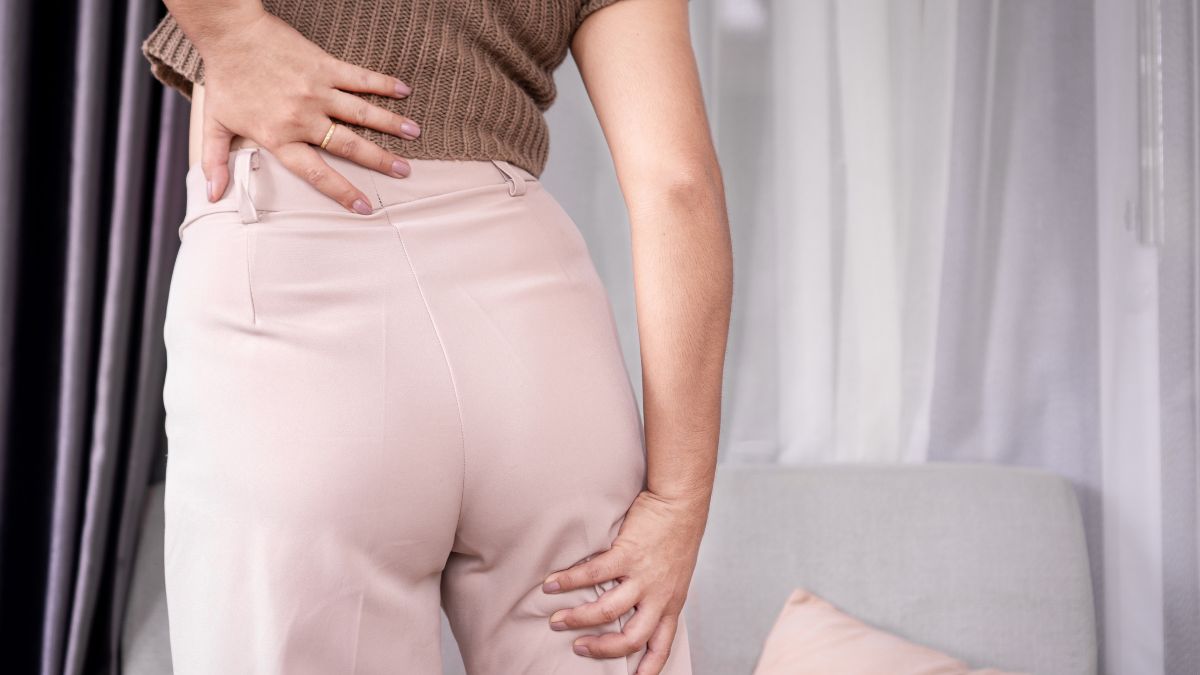In our increasingly sedentary world, we spend a lot of time sitting, whether at work, during commutes, or at home. This can lead to various health problems, including “Dead Butt Syndrome” (DBS), a condition that affects the gluteal muscles. This syndrome is also known as Gluteal Amnesia and occurs when the gluteal muscles, primarily the gluteus medius and minimus, weaken and become inactive due to excessive sitting.
The Impact of Dead Butt Syndrome
The gluteus muscles are crucial for stabilizing the pelvis, maintaining good posture, and facilitating movement. When these muscles become “dead” from extended periods of sitting, several negative outcomes can occur:
Lower Back Pain:
The glutes are vital for supporting the lower back. When they weaken, other muscles in the back compensate, leading to strain and pain.
Poor Posture:
Weak glutes can result in poor posture, leading to slouching, forward head posture, and other alignment issues. This can exacerbate existing back pain and lead to further complications.
Increased Risk of Injury:
The glutes are essential for balance and coordination. When they are weak, individuals become more prone to falls and injuries, particularly during activities that require balance and coordination.
Poor Gait and Movement:
The glutes play a crucial role in walking and running. When they are inactive, gait can become compromised, leading to inefficient movement patterns and reduced mobility.
Impact on Overall Health:
Dead Butt Syndrome not only affects the muscles, but it also has wider implications for overall health. For example, it can contribute to poor circulation and potentially increase the risk of deep vein thrombosis (DVT).
Addressing Dead Butt Syndrome
Recognizing and addressing Dead Butt Syndrome is vital for maintaining physical well-being in our sedentary world. This requires lifestyle changes and incorporating exercises to counteract the negative effects of prolonged sitting.
Exercise and Glute Strengthening
Regular exercise and specifically targeting the glute muscles are essential to address Dead Butt Syndrome. Some recommended exercises include:
- Squats: A fundamental exercise for strengthening the glutes, quads, and hamstrings.
- Lunges: Effective for targeting the glutes, quads, and hamstrings while also improving balance.
- Glute Bridges: A great exercise to isolate and activate the glutes.
- Hip Thrusts: A powerful exercise for building glute strength and power.
Incorporate Movement Breaks
Regular movement breaks throughout the day are essential to counteract the negative effects of prolonged sitting.
- Stand up and walk around: Take a few minutes every hour to walk around your office or home.
- Stretch: Simple stretches can help to loosen muscles and improve circulation.
- Use a standing desk: Incorporate a standing desk to allow for alternating between sitting and standing.
Lifestyle Changes
In addition to exercise, certain lifestyle changes can be implemented to reduce the effects of Dead Butt Syndrome.
- Choose active transportation: Walk, bike, or use public transport instead of driving whenever possible.
- Find active hobbies: Participate in hobbies that involve movement, such as dancing, hiking, or sports.
- Be mindful of your posture: Maintain good posture while sitting and standing.
Take Away Points
Dead Butt Syndrome is a prevalent issue in our increasingly sedentary world. It is crucial to be aware of its potential implications for overall health. Addressing this syndrome requires:
- Regular exercise focusing on strengthening the glute muscles.
- Frequent movement breaks throughout the day.
- Lifestyle changes to reduce prolonged sitting and increase physical activity.
By incorporating these measures, individuals can combat the adverse effects of Dead Butt Syndrome and maintain their physical well-being in the modern era.









